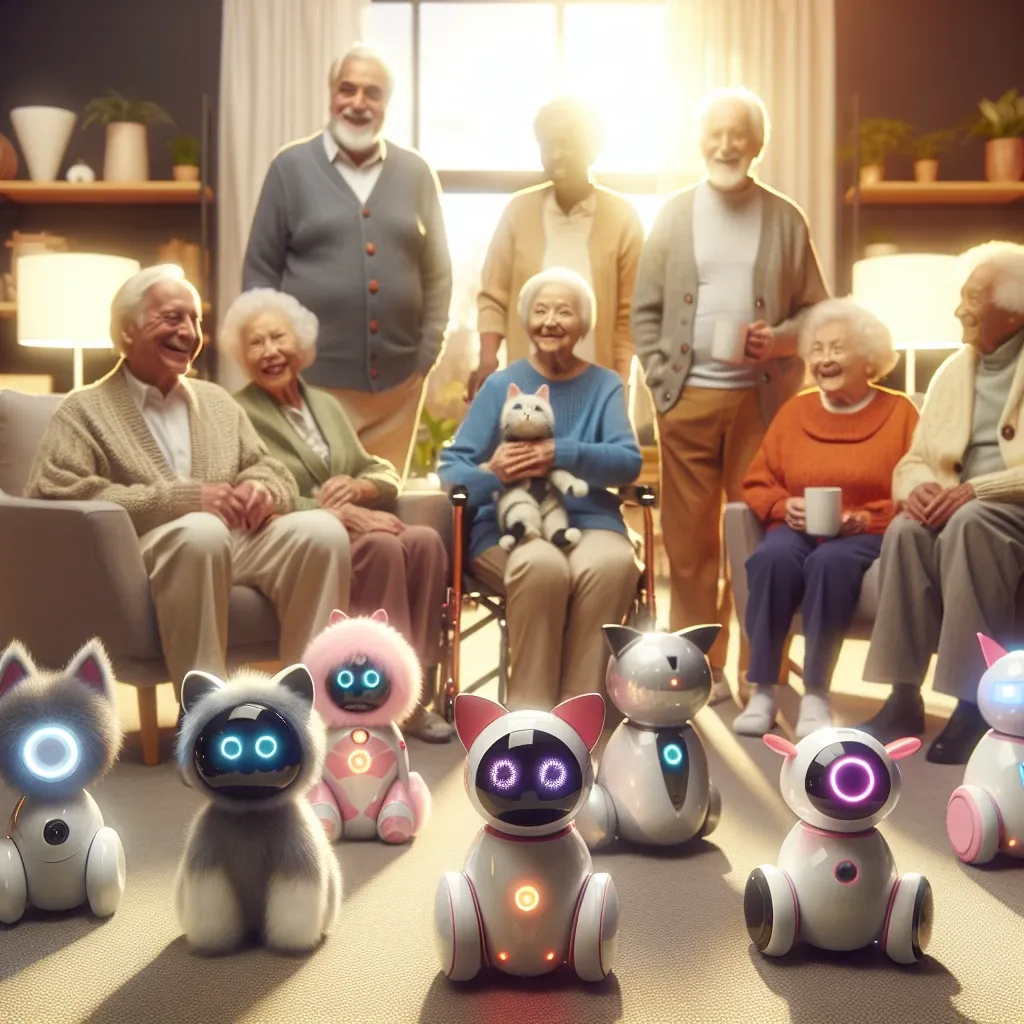The Rise of Robot Pets in Elderly Care Facilities
In recent years, the integration of technology into healthcare has taken a significant leap forward, especially in elderly care facilities. Among the most fascinating developments is the rise of robot pets, designed to provide companionship, emotional support, and even therapeutic benefits to seniors. This article delves into the growing popularity of robot pets within these facilities, exploring their benefits, challenges, and future potential.
Understanding the Concept of Robot Pets
Robot pets are not just high-tech toys; they are sophisticated devices designed to mimic the behaviors and emotional responses of real animals. These robotic companions can engage in various interactions, such as responding to touch, following commands, and even expressing emotions. With advancements in artificial intelligence and robotics, these pets have become increasingly realistic and beneficial for elderly individuals, particularly those with cognitive impairments or mobility issues.
Historical Context
The concept of robotic companions is not entirely new. The earliest forms of robotic pets date back to the late 20th century, with simple robotic toys designed for children. However, the idea of utilizing these robots in the context of elderly care emerged in the early 2000s, spurred by the increasing need for innovative solutions to address social isolation and mental health issues among seniors. Facilities began to recognize the potential of robot pets to improve quality of life and as a means of enhancing emotional well-being.
Current Trends in Elderly Care Facilities
Today, robot pets are becoming a common sight in many elderly care facilities around the world. Facilities are increasingly integrating these companions into their programs, recognizing their value in providing emotional support and fostering social interactions. According to a recent study, nearly 30% of elderly care homes in the United States have adopted some form of robotic pet into their daily routines. This trend is expected to grow as technology continues to advance.
Benefits of Robot Pets
1. Emotional Support
One of the most significant advantages of robot pets is their ability to offer emotional support. Many elderly individuals face feelings of loneliness and isolation, especially those living in care facilities. Robot pets provide a sense of companionship, reducing these feelings and improving overall mental health.
2. Cognitive Stimulation
Robot pets can also play a vital role in cognitive stimulation. Engaging with these pets requires seniors to think, respond, and interact, which can help keep their minds sharp. Activities like grooming the pet or teaching it tricks can provide mental challenges that are both enjoyable and beneficial.
3. Physical Activity
While robot pets are not substitutes for real animals, they can encourage physical activity. Seniors may find themselves moving around more to interact with their robotic companions, helping to improve their mobility and overall health.
4. Therapeutic Benefits
Several studies have shown that robotic pets can reduce stress levels and promote relaxation. The soothing presence of a robot pet can lower anxiety and improve mood, making them a valuable addition to therapeutic programs within elderly care facilities.
Challenges and Considerations
1. Initial Cost and Investment
While the benefits of robot pets are clear, the initial investment can be a challenge for many care facilities. These robots can be expensive, and budgeting for them may require careful planning. However, many facilities find that the long-term benefits far outweigh the initial costs.
2. Training and Adaptation
For both staff and residents, adapting to robot pets may require training. Caregivers need to understand how to operate these devices effectively, and seniors may take time to adjust to their new companions. Ongoing support and training can help mitigate these challenges.
3. Ethical Considerations
The use of robot pets also raises ethical questions. Some may argue that these robotic companions cannot replace the emotional connection provided by real pets. It is essential for facilities to strike a balance, ensuring that robot pets complement rather than replace traditional forms of companionship.
Comparing Robot Pets to Traditional Pets
While both robot pets and traditional pets offer companionship, they cater to different needs and preferences. Here are some key comparisons:
- Care Requirements: Traditional pets require feeding, grooming, and medical care, while robot pets require minimal maintenance, such as battery charging.
- Allergies: For seniors with allergies, robot pets present a hypoallergenic alternative, eliminating the risk of allergic reactions.
- Safety: Robot pets pose no risk of bites or scratches, making them safer for elderly individuals with mobility issues.
- Connection: While robot pets provide companionship, they lack the warmth and intuitive connection that real animals can offer.
Real-World Examples
Several elderly care facilities have successfully integrated robot pets into their programs, demonstrating the positive impact they can have. For instance, a facility in Massachusetts noted a significant improvement in residents’ mood and social interactions after introducing robotic dogs. Residents reported feeling less lonely and more engaged in activities.
Future Predictions
The future of robot pets in elderly care facilities looks promising. As technology continues to develop, we can expect even more advanced features in robotic companions, including enhanced emotional recognition and greater interactivity. Additionally, as the aging population grows, the demand for innovative solutions like robot pets will likely increase, further embedding them into the fabric of elderly care.
Conclusion
Robot pets are proving to be more than just a technological novelty; they are valuable tools in enhancing the quality of life for seniors in care facilities. By providing companionship, cognitive stimulation, and therapeutic benefits, these robotic companions are paving the way for a new era in elderly care. As we look to the future, the integration of these innovative solutions will undoubtedly continue to grow, promising a more connected and supportive environment for our elderly population.

